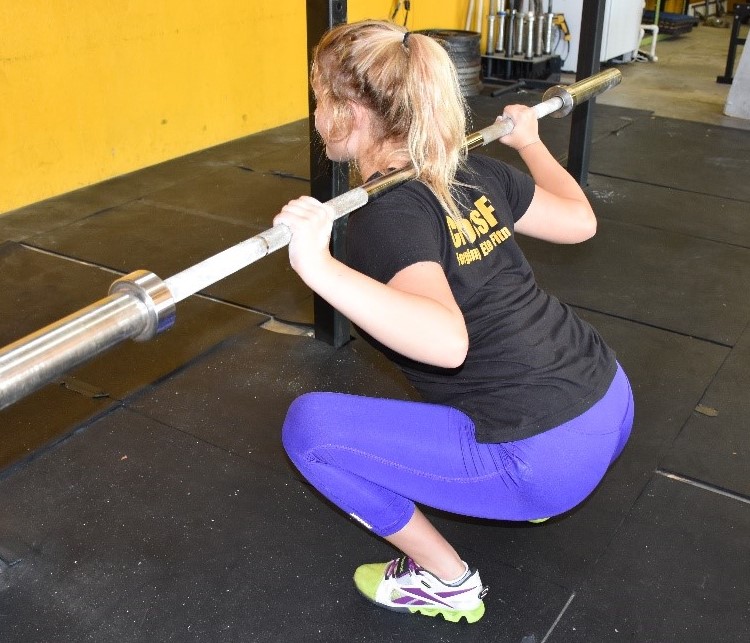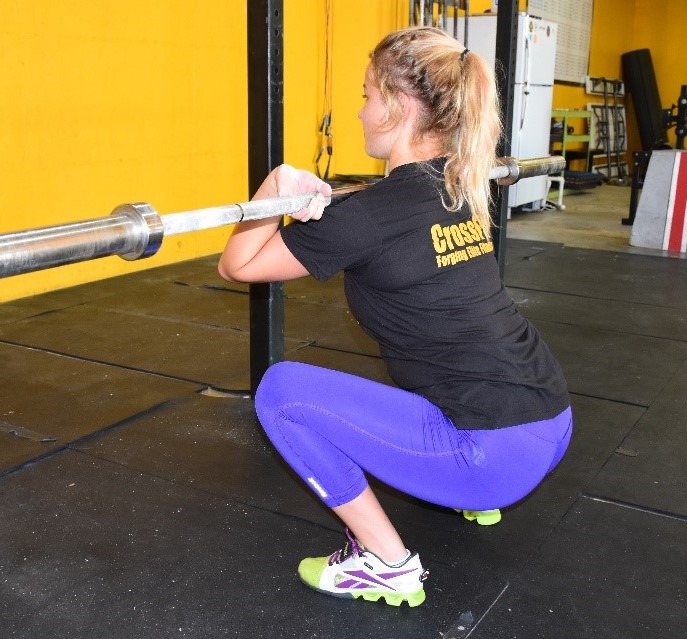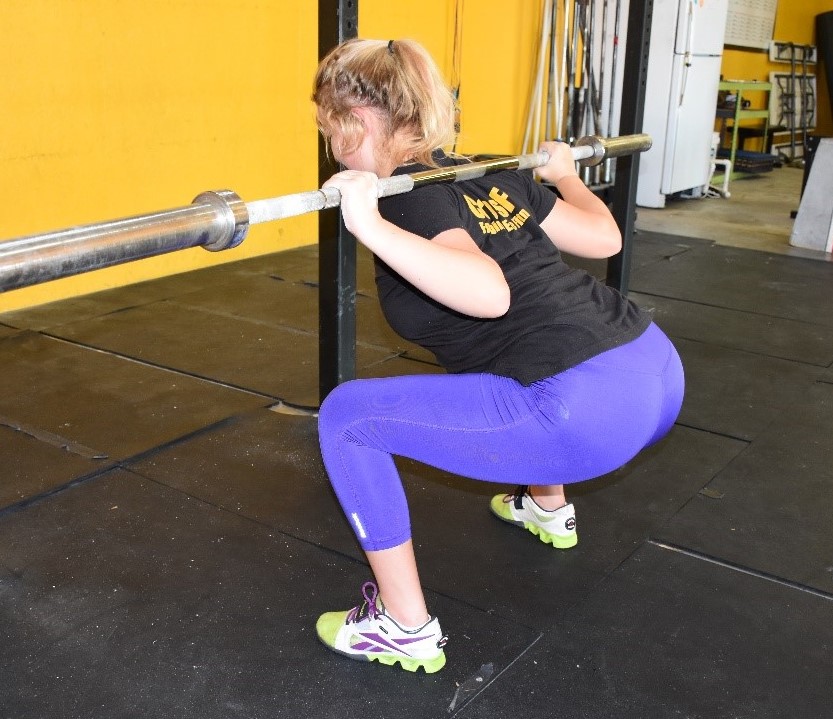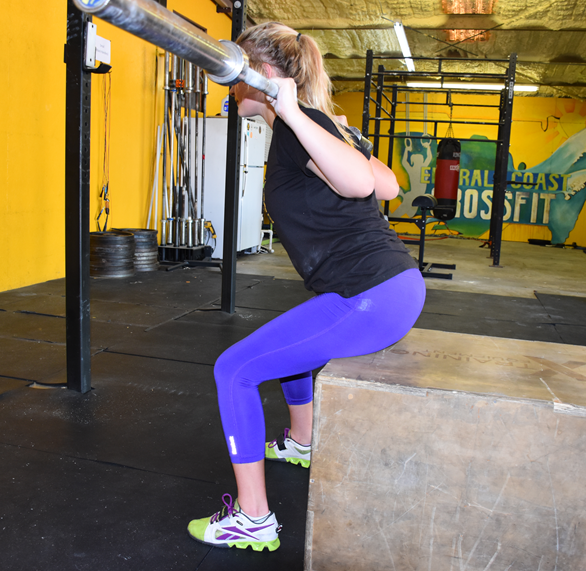Is Squatting Bad for My Knees? Part II
Jun 07, 2016Let’s recap from last week:
Your ankles drive the squat bus and your knees are along for the ride. Unfortunately, the hip is often overlooked when pain or dysfunction with squats occurs. Strengthening targeted to the hip will improve knee position during the squat. If it hurts your knees to squat, it is likely a faulty movement pattern causing the issue.
When there is pain, do not push through. Jane Fonda might have said “no pain, no gain” during her abs, buns & thighs workout but this does not apply. The feeling of an ice pick jabbed in your knee cap is not normal. Pain with a back squat does not mean you can’t squat at all! Try these first:
- Use different rack positions. Front squats will be more difficult for those with poor ankle mobility to achieve. High bar and low bar back squats each have their own advantages. I dig into this deeper later!
- Lower the weight and work on form. It is not about hitting a PR every time you walk in the gym. For longevity of your body and long-term strength goals, work with a light weight until you have the ankle mobility, posterior chain strength and appropriate movement patterns. To continue to build strength with these lighter weights, work eccentric movements. That is, slowly lower into the bottom of a squat (count of 3-5) and then drive out of the bottom with power. Initiate the movement with a hip hinge and no crashing into the bottom!
- Looking to deload the knees? Try squatting to a box. This allows the tibia, the lower leg, to remain more vertical. So if you have ankle mobility issues, these are your friend. Box squats are also a fantastic exercise to target the posterior chain! More about this below!
I eluded to different flavors of squats in the last post. Is high bar back squat bothering the knees today? Try a low bar position, front rack or squat to a box. There are so many options! It is nearly as exciting as picking a flavor of ice cream.
Check out Noel showing us some variations of squats! Pay attention to her ankle and shin positions.
High Bar Back Squat a.k.a Traditional Back Squat
The bar rests across the top of the upper trap, on the shoulders. Throughout the movement, the torso remains upright. With this set up, the knees tend to move more forward than in other squat variations so adequate ankle mobility is essential!

Remember, those with significant ankle mobility issues will have trouble maintaining the upright torso and may try to sidestep the issue by turning the toes out wide. Another squat flavor will allow you to move in less compromising patterns while still gaining strength. Don’t forget to work on ankle mobility every day!
Front Squat
The bar rests across the front of your shoulder, elbows are high and in front. The torso is the most upright in this squat flavor to keep the barbell over the midfoot. Again, ankle mobility is key here!

For those who do not have glaring mobility restrictions, the front squat is a great exercise to carry over for the clean.
Low Bar Back Squat
The feet are in a wider stance than for the traditional squat. The bar rests lower across your shoulders, elbows are back and high to help create a shelf for the barbell. The torso maintains more of a forward inclination to keep the barbell over the midfoot.

This flavor of squat decreases the torque at the knees by allowing the tibia, or the shin, to remain more vertical. (Go back and look at her shin-to-foot angle in the traditional squat and compare!) More torque is placed at the hip, so the hammies and glutes are targeted. If you feel a pinching at the front of the hip, vary your squat width and work on that hip flexion mobility!
Box Squat
The feet are in a wider stance, similar to the low bar set up. The bar rests across your back in either high bar or low bar position. A sturdy box is behind the lower legs. The hips are allowed to travel further posteriorly during this movement which allows the tibia to remain vertical.

The box squat is great for all athletes to include in their workouts. It is helpful when just learning how to squat or trying different foot positions. After a knee or ankle injury, it is a good way to decrease torque at the knee and demand on the ankle joint. Box squats are also used for power athletes as it has been shown to increase the rate of force development, or explosive strength, more than other squat flavors.
Each of the squat flavors has something different to offer for your health and athletic development. If you are recovering from an injury or lack mobility in the hips or ankles, there is still a flavor for you! Grab an empty barbell and try each of the variations. Don’t be afraid to vary your stance width. Start with a taller box and gradually work your way down as you get comfortable.
Taking a video of yourself moving is the cheapest and quickest way to find faults and underlying mobility issues. Once you work through each squat flavor, you will have a better idea of which mobility drills to introduce daily. Get your squat moving correctly and cut out that knee pain! After all, it’s not your knees’ fault!
Thanks for reading!
-Dr. Jackie, PT, DPT, CSCS
References:
Swinton P, Lloyd R, Koegh J, Agouris I, Stewart A. The biomechanical comparison of the traditional squat, powerlifting squat, and box squat Journal of Strength and Conditioning Research. 2012;26(7):1805-1816.
Let us help you figure out to live your best active life today!
Remember, Movement is Medicine!

